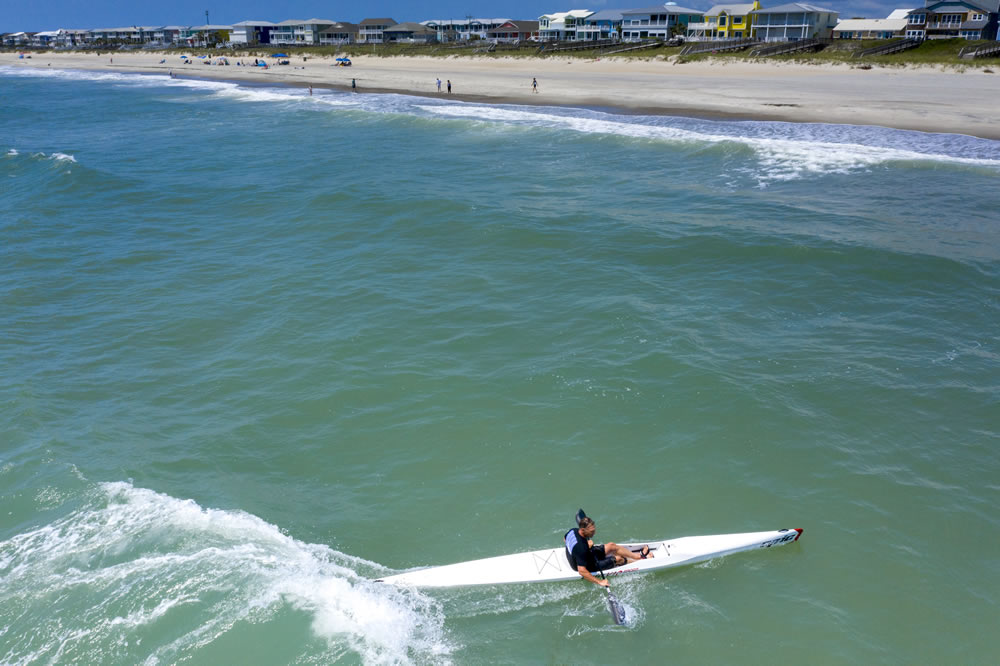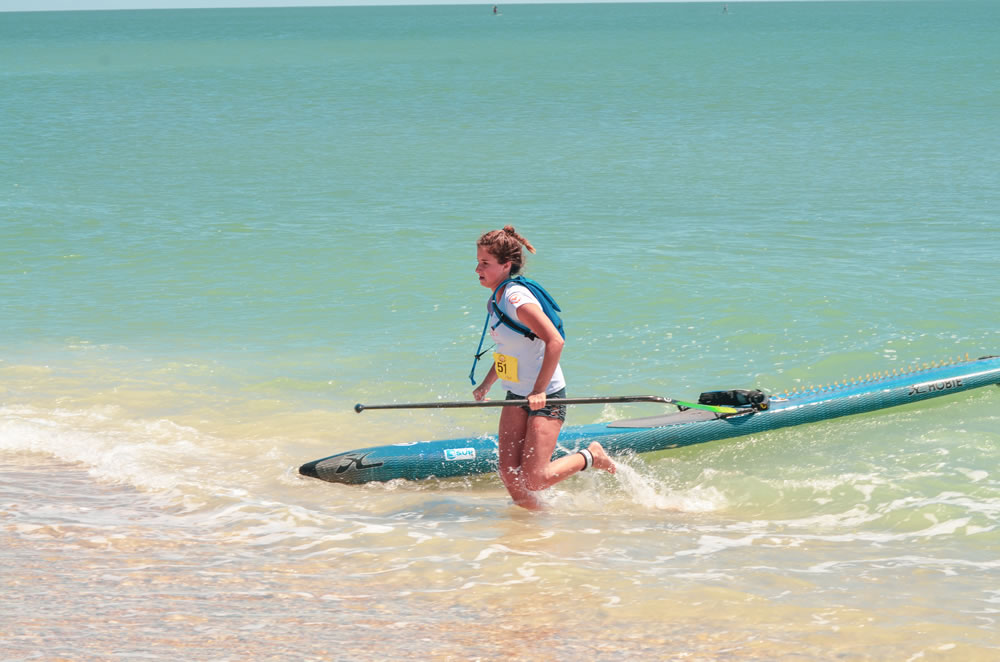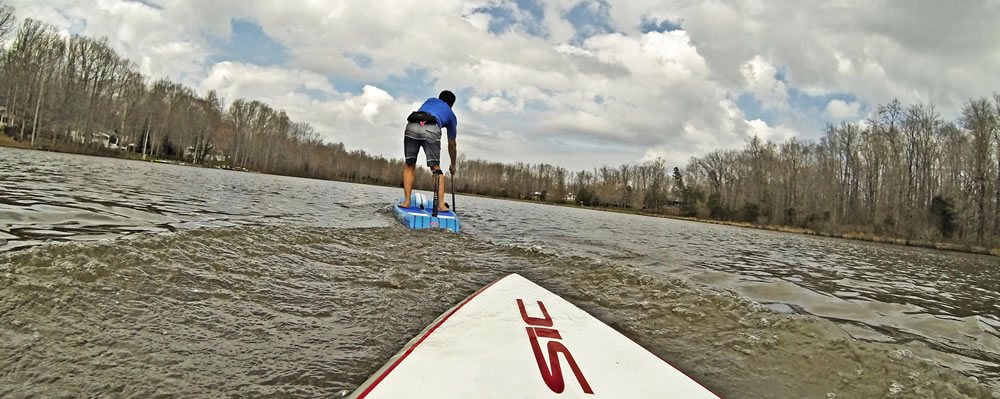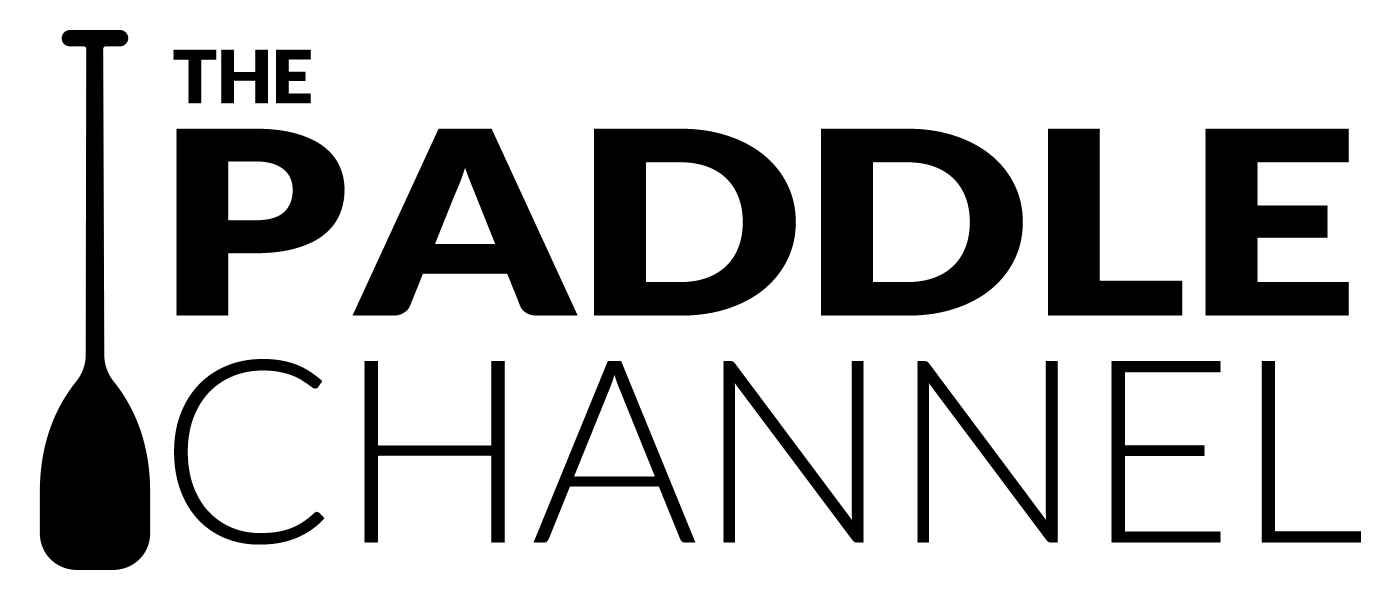This post is part of a series of tips and hacks to help you go 10% faster in your next race. For some athletes, implementing just one of these tips will net you a 10% gain. For others, combining the tips in these articles will produce that 10% improvement at your next paddle race.
Many athletes will dedicate months to their paddle training program, but will neglect to train for the finish. Failure to finish well can cost you valuable seconds and dramatically affect your final position. Read on for tips to help you finish well and do maybe even do 10% better in your next race.
Hint 1: Become Intimate with the Race Finish Line
Prior to race day, you need to know your finish line well. REALLY well. Finish lines tend to look different from the water than they do on land, and you don’t want to waste valuable seconds trying to figure out exactly where to go.
Walk the line
If you have a beach or shore finish, walk the finishing chute as part of your race day routine, if possible. Start at the water and walk your way all the way across the line. Look for anything that might trip you up or slow you down, like shells, rocks, a berm, etc. Plan how you’re going to deal with these potential obstacles, and then walk through your plan. As part of your warmup, you may want to do multiple “walk-throughs”, gradually speeding up each time.
If you’re finishing on the water, like between two buoys, try to preview the finish line multiple times. Know where it is, and think through possible scenarios. What will be your fastest line? What challenges might you face when finishing? Will wind or current be a factor at the time you finish? Where is the best point to release your leash? Rehearse everything.
Scout the last mile

If possible, go out and actually paddle the last mile or so of the course. As you paddle to the finish line, look for landmarks that might guide you, or that might help you in your race strategy. Look for possible difficulties and plan how to deal with them. KNOW where the finish line is located — when you’re pushing hard at the end of a grueling race, docks and shoreline can all start to look the same.
You don’t want to miss your best finish by pausing to get oriented, or by misjudging the distance to the finish line.
If it’s not possible to actually paddle the finishing mile, pull up as many maps as you can and study the final parts of the course. Try to find video of the finish in previous races. Do whatever you can to ensure there are no surprises at the end of your race.
Pay attention to wind and current
Wind and current can play a huge role in your finishing position. Know the tides and the effect they will have on the last mile of your race. If you’re facing a current, typically your best line will be in the shallower water. Conversely, if you’re paddling with current, the deeper water will generally give you the most assistance.
Develop a strategy for wind, too. If there’s a headwind when you finish, can you choose a line that will help block some of the wind? If you have a tailwind, how do you maximize the push? Is wind likely to blow you off course as you approach the finish?
If possible, paddle the course prior to your race day in conditions you expect to encounter. For example, if you plan to finish at high tide, preview the course at high tide. Take a buddy and try different lines to see which might be the fastest. Sometimes the shortest line isn’t the fastest, and a little experimentation can help. Keep in mind that conditions may change, so you need to be flexible, too, but it helps to be very familiar with your course in expected conditions.
Train to Finish
Many paddle athletes devote hundreds of hours to training to paddle fast, but then neglect to train for the finish. Training to finish can take a few different forms:
Practice, practice, practice

As part of your training program, you should be practicing your race finish technique. For example, if you have a beach or shore finish, you should practice that as much as possible during your training, especially during your Build phases. Practice surfing your craft, unfastening your leash (I once lost 5 places in a race because I bobbled the leash release), and dismounting your craft.
If your race requires you carry your board or watercraft across the finish line, practice that, too.
Will you need to run to the finish line? Then practice that as part of your training.
Use the Intervals…
Intervals provide a great opportunity to practice your finishing skills. Crossing the finish line after a hard race is very different from cruising in during an easy recovery session, so train to finish after some serious effort.
During your Build phases (especially Build 2), use your interval days to train to finish. You can start your interval from shore, then paddle back and complete your interval back on shore, release your leash, dismount, and run up the beach. Then recover and repeat. You can also start your interval from the water side, paddling in to finish the interval, and then paddle back out nice and easy as part or all of your recovery.
Hint: Easy and slow “finish line practice” definitely has a place in your training, too. Your Base training phases and recovery weeks are a great time to do this. Master the skill first (and releasing your leash and dismounting your board ARE skills), then gradually add intensity as your season progresses.
Finish Your Intervals Like You Plan to Finish Your Race
When doing intervals in training, especially when nearing the end of your interval sets, picture yourself finishing the race. Keep going at the prescribed effort right up until the very end of the interval. It’s easy to slack off on the last interval, but remember, if you train by slacking off on the last interval in training, you’re training yourself to slack off on the last interval of the race (the finish).
Right before the last interval, especially when I’m tired, I like to tell myself, “Last one, best one,” and I picture myself finishing neck and neck with my biggest rival. The goal is to train like you’re going race, so make your training like your race, right?
Finish on the Other Side of the Line…
While this seems obvious, a lot of races have been lost because the athletes stopped going hard prior to the finish line. Keep paddling or running hard until you’re at least one stroke or step past the line.
Stay Smooth
You’ve heard the saying, “Slow is smooth, and smooth is fast.” Stay smooth, and you’ll finish faster. Start by practicing your finishes slowly, and thus smoothly, early in your training season. As the season progresses and your skills improve, you’ll be able to stay smooth while going faster and faster. Skills like releasing your leash while surfing in on a wave become smooth, and you finish faster with fewer mishaps.
Be Smart About Drafting

In cycling, you want someone to pull you right up to the finish line so you can sprint around them and seize the day. In paddling, it’s actually very difficult to overtake a competitive paddler when you’re drafting to the finish line. Be prepared to pull the draft train the last bit of the race, and make your competitors work really hard to overtake you. The distance you need to pull at the end of the race will vary depending your own skills, fitness, strengths, and the race itself, so that’s another strategy for you to work out when learning the course.
Know the Rules
Don’t make a silly mistake like forgetting you need to carry your board, surfski, or canoe across the finish line, if that’s what the rules call for. Know the rules prior to the race, and like I mentioned above, training accordingly!
As always, train well!







